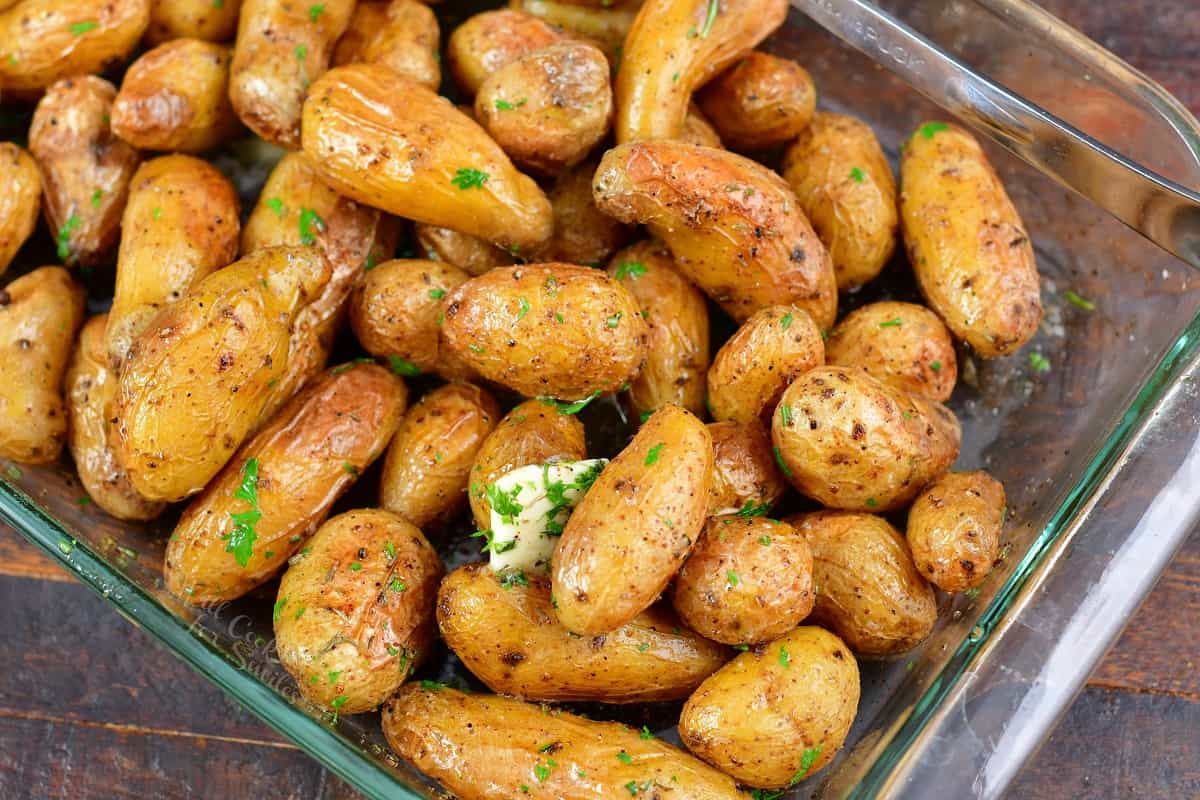
Fingerling potatoes are small, elongated tubers that pack a punch in both flavor and nutrition. These little spuds have been gaining popularity in kitchens around the world, and for good reason. Why are fingerling potatoes so special? They offer a unique, buttery taste and a creamy texture that sets them apart from regular potatoes. Plus, they come in a variety of colors, from yellow to purple, making them a vibrant addition to any dish. Whether roasted, boiled, or grilled, fingerlings hold their shape well and absorb flavors beautifully. Ready to learn more about these culinary gems? Let's dig into 25 fascinating facts about fingerling potatoes!
Key Takeaways:
- Fingerling potatoes are small, colorful, and flavorful tubers that don't need to be peeled before cooking. They are rich in nutrients, low in calories, and can be grown in containers, making them a versatile and healthy addition to any diet.
- With their buttery, nutty flavor, fingerling potatoes can be roasted, grilled, boiled, or sautéed to elevate any dish. Their unique shape and gourmet appeal make them a favorite among chefs and a popular choice for farm-to-table cooking.
What Are Fingerling Potatoes?
Fingerling potatoes are small, elongated tubers that come in various colors and flavors. They are often prized for their unique shapes and gourmet appeal.
- Fingerling potatoes are typically 2-4 inches long, making them perfect for roasting or grilling.
- They come in a variety of colors, including yellow, red, and purple.
- These potatoes have a thin skin, which means they don't need to be peeled before cooking.
- Fingerlings are known for their buttery, nutty flavor, making them a favorite among chefs.
- They are often used in salads, soups, and as a side dish due to their firm texture.
History of Fingerling Potatoes
The history of fingerling potatoes is as rich as their flavor. These tubers have been cultivated for centuries and have a fascinating background.
- Fingerling potatoes originated in South America, where they have been grown for thousands of years.
- They were first introduced to Europe in the 16th century by Spanish explorers.
- The name "fingerling" comes from their finger-like shape.
- In the United States, fingerling potatoes gained popularity in the late 20th century as part of the farm-to-table movement.
- Today, they are grown worldwide and are especially popular in gourmet cooking.
Nutritional Benefits of Fingerling Potatoes
Fingerling potatoes are not just delicious; they are also packed with nutrients. Here are some of the health benefits they offer.
- They are an excellent source of vitamin C, which helps boost the immune system.
- Fingerling potatoes contain potassium, which is essential for heart health.
- They are rich in dietary fiber, aiding in digestion and promoting gut health.
- These potatoes have antioxidants, which help fight free radicals in the body.
- They are low in calories, making them a healthy addition to any diet.
Growing Fingerling Potatoes
Growing fingerling potatoes can be a rewarding experience. They are relatively easy to cultivate and can be grown in various climates.
- Fingerling potatoes prefer well-drained soil and full sunlight.
- They can be grown from seed potatoes, which are small tubers used for planting.
- It takes about 90-120 days for fingerling potatoes to mature.
- These potatoes can be grown in containers, making them suitable for small spaces.
- Regular watering and hilling (covering the stems with soil) are essential for a good harvest.
Cooking with Fingerling Potatoes
Cooking with fingerling potatoes can elevate any dish. Their unique flavor and texture make them versatile in the kitchen.
- Roasting fingerling potatoes with olive oil and herbs brings out their natural sweetness.
- They can be boiled and used in potato salads for a firm, flavorful bite.
- Grilling fingerling potatoes gives them a smoky flavor that pairs well with meats.
- Sautéing them with garlic and butter makes for a simple yet delicious side dish.
- Fingerling potatoes can also be mashed, providing a creamy texture with a unique taste.
The Final Bite
Fingerling potatoes aren't just tiny spuds; they're packed with flavor and nutrition. These little gems come in various colors and shapes, making them a versatile addition to any meal. Whether roasted, boiled, or grilled, they bring a unique taste and texture to the table. Plus, they're rich in vitamins and minerals, offering health benefits like improved digestion and heart health.
Growing them at home is easier than you might think. With the right soil and care, you can enjoy fresh fingerlings straight from your garden. Their long shelf life also means you can store them for months without losing quality.
So next time you're at the market, grab a bag of fingerling potatoes. Experiment with different recipes and savor the delightful flavors these tiny tubers have to offer. Your taste buds will thank you!
Frequently Asked Questions
Was this page helpful?
Our commitment to delivering trustworthy and engaging content is at the heart of what we do. Each fact on our site is contributed by real users like you, bringing a wealth of diverse insights and information. To ensure the highest standards of accuracy and reliability, our dedicated editors meticulously review each submission. This process guarantees that the facts we share are not only fascinating but also credible. Trust in our commitment to quality and authenticity as you explore and learn with us.


